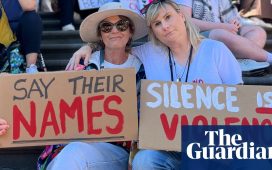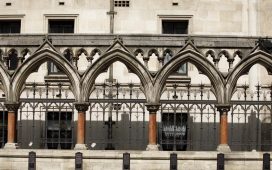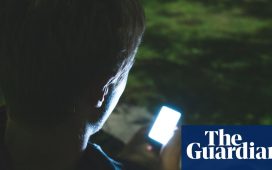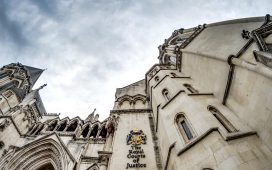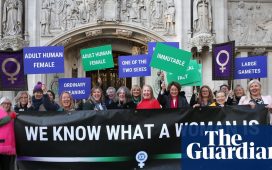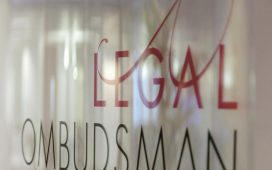It was, as his friends described it, the “last kick of the British establishment”. At 2am on Monday, Julian Assange, the founder of Wikileaks, was woken in his small cell in the high-security Belmarsh prison, south-east London, and ordered to dress before being put in handcuffs.
It was the beginning of the end of Assange’s incarceration in Britain but it was going to be on his jailers’ terms.
“He was brought into a transport vehicle and put in a tiny box there, where he basically sat for three hours,” said Kristinn Hrafnsson, the editor-in-chief of WikiLeaks, of his friend’s delivery to Stansted airport in Essex, 40 miles (65km) north-east of the capital.
“There were up to 40 policemen guarding the outside,” Hrafnsson said. “There was a helicopter hovering overhead, six police vehicles in a convoy to the airport, when they knew they were driving him basically out of the country in accordance to the agreement that has been drawn up.
“It begs the question: why on earth? What on earth did they envision? That he will abscond on his way to freedom?”
After seven years hiding away in a small room of the Ecuadorian embassy in Knightsbridge, central London, and a further five in Belmarsh, Assange, now 52, is expected to walk out of a hearing at a US district court on the Pacific island of Saipan, in the Northern Mariana Islands, as a free man.
He will plead guilty to a single criminal charge of conspiring to obtain and disclose classified US national defence documents, at which point US prosecutors will play their part in the plea deal by seeking a 62-month sentence. This will take into account the time Assange has spent in jail, allowing him to immediately return to his native Australia.
The final moments of the Assange saga had been tightly choreographed. A social media-friendly video of Assange’s release into the hands of his British lawyer, Gareth Pierce, at Stansted was released by WikiLeaks along with a crowdfunding appeal to cover the $520,000 (£410,000/$A783,000) cost of the Bombardier Global 6000 jet that took him to Saipan. He had not been permitted to fly commercially.
Right until the end, there was jeopardy for a man once named an “enemy of the US state” for his role in the publication of hundreds of thousands of leaked documents relating to the Afghanistan and Iraq wars.
His wife, Stella, said: “We weren’t really sure until the last 24 hours that it was actually happening.”
The genesis of Assange’s release had been in a plea deal proposed by his lawyers to the US justice department in March.
The US had been pursuing Assange for extradition over 18 charges, exposing him to up to 175 years in prison. Assange’s lawyers suggested their client, who had physical and mental health problems, could instead plead guilty to one count remotely from London. With time served, he could then be released.
The US justice department was not convinced. Hrafnsson, who was the last person to see Assange in his cell in Belmarsh when he visited on Saturday, said the real turning point had been a high court ruling in May.
Assange won the right to appeal against his extradition to the US, closing down the possibility of him being quickly delivered up to the US justice system. Dame Victoria Sharp, the president of the king’s bench division of the high court, and Mr Justice Johnson, ruled there was an arguable case that Assange could be discriminated against, after being told that a US prosecutor had said the first amendment might not cover foreigners in matters of national security.
“The decision … in the high court was an absolute turning point, in my opinion,” Hrafnsson said. “That, for the first time, indicated that he was on a road to victory, fighting the extradition, even though it would possibly take years, going through all stages in judiciary here and in the European court of human rights.”
Since May 2022, when Anthony Albanese led the Australian Labor party to victory in a federal election, Joe Biden’s administration had also been facing political pressure from Canberra to find a compromise that both sides could stomach.
Assange’s father, John Shipton, disclosed that he had had several lunches with Albanese when the latter was in opposition, and had been assured that he would do “whatever he can” to free his son.
after newsletter promotion
The Australian government did not want a public row and Albanese said in February: “We’re engaging diplomatically to try to achieve an outcome rather than try to achieve a headline.” The Australian government had sent an important public symbol of its interest in the case in April 2023 when the Australian high commissioner to the UK, Stephen Smith, visited Assange in prison. Albanese and his cabinet members then voted in favour of a parliamentary motion put forward by an independent MP in February urging the UK and US to allow Assange to return to Australia.
With the courts in London threatening to make the Assange case a running sore in US-Australian relations, Hrafnsson said there was a distinct change in approach in Washington, with a back and forth opening up between Assange’s US lawyer, Barry Pollack, and the Department of Justice.
He said: “When Joe Biden was asked a few months ago what was his response was to very strong requests by the Australian authorities to bring this to closure, and whether they would consider dropping the case against Julian, he replied with a single sentence: ‘We are considering it’. That meant it was a real option on the table and being brought up at the highest political level.”
A sticking point in the deal had been the insistence from Washington that a US court had to hear Assange’s plea in person, and Assange’s aversion to appearing at a hearing in continental America. That was when the idea was raised of holding a hearing in a district court on Saipan, a former Japanese colony that was administered by the Americans after the war and became part of the US in 1986.
Hrafnsson said: “There’s been a lot of back and forth in the last few weeks. There were increasing communications and back and forth, suggestions, a feeling out on all fronts.
“The pace of the back and forth increased incrementally as we got closer. It led to an outcome that both were satisfied with, although, as with all negotiations, neither party is fully happy.
“I think throughout, there was always the danger that this might collapse and it would not materialise. You have to continue and assume on the basis that nothing is done until it’s done. At least from my perspective, I’ve learned to be quite a bit cynical.”
Hrafnsson and Stella visited Assange last Wednesday, before his final bail hearing on Thursday. Assange had asked for that hearing to be held in private, the Crown Prosecution Service said in a statement. Assange had not attended but it was done “in camera”. All seemed set.
Stella, 40, informed their children, aged five and seven, that they were all going on a trip to see family in Australia and that there was going to be a “big surprise”.
With his wife and sons flying to Sydney to prepare for their new life in Australia, the WikiLeaks founder was facing a weekend without visitors.
“I decided that I would see him,” said Hrafnsson, 62. “We could actually discuss some practical issues as well, his travel and his arrangements. He was calm, relaxed, in a good mood in the sense that this was finally happening. Of course, cautious, as he has learned to be cautious, naturally, because of past experience, but happy. And it was the only time that you actually walked out of Belmarsh and thought: ‘That’s a good feeling’. And the good feeling was that I never have to come back here again.”

